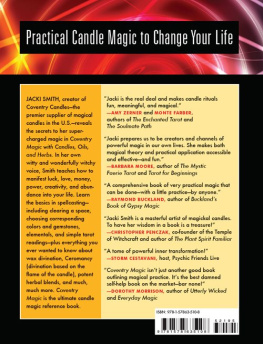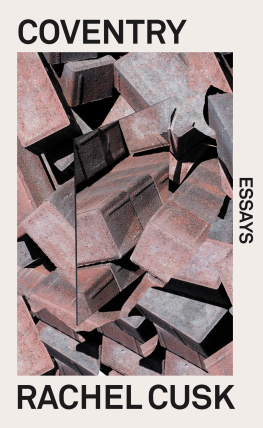The Story of Coventry
henry
Henry VI.
from the painting in the National Portrait Gallery.
The Story ofCoventry
by Mary Dormer Harris
Illustrated by Albert Chanler
London: J.M. Dent & Sons, Ltd.
Aldine HouseBedford Street
Covent Garden W.C. 1911
titlepage
All rights reserved
AD MATREM
PREFACE
In preparing this volume for the press I have omitted some of the matter in Life in an Old English Town, which did not seem suitable for this series, and added fresh material likely to be useful to those who wished to identify the historic sites, and see the historic buildings of Coventry. In expanding Chapter XV. in so far as it dealt with the Corpus Christi playsa task the labours of Dr Hardin Craig have rendered comparatively lightI have been able to add one hitherto unpublished item to the subject of the medival dramatic history of Coventry (p. 296), and dispel the idea that the name "S. Crytyan" given to a play acted in 1505 is a misreading for S. Catherine. For permission to publish this item I am indebted to the kindness of Mr William Page, F.S.A., editor of the Victoria County History. Another point remotely bearing upon the pageants is the chronology of royal visits to Coventry (p. 288), which I have endeavoured to clear up as far as I could, Sharp's Dissertation on the Coventry Mysteries, the usual guide in these matters, being extremely faulty in this respect on account of the confusion which prevails in the MS. annals or mayor-lists, on which he depended for dates. Of these extant lists, both in print and in MS., I have given a detailed account (p. 106) in connection with the entry concerning Prince Henry's supposed arrest by Mayor Hornby, a matter which, in view of the Shakespearean interest involved, is more fully treated of here than in my previous book.
My thanks are due to Mr J. Munro and the Early English Text Society for the kind permission to print extracts from Dr Craig's Two Corpus Christi Plays and from my own edition of the Leet Book. To Mr George Sutton, Town Clerk of Coventry, and all the unfailing courteous officials with whom I so constantly came in contact during my work, I must (not for the first time) express my gratitude. My obligations to Messrs Longmans and the Society of Antiquaries for permission to print portions of Chapters XII. and XIII. respectively have been acknowledged in my previous work.
MARY DORMER HARRIS
Leamington , Aug. 7, 1911.
CONTENTS
| The Three Spires and Coventry |
| Leofric and Godiva |
| The Benedictine Monastery |
| The Chester Lordship |
| Beginnings of Municipal Government |
| Prior's-half and Earl's-half |
| The Seigniory of the Prior and Queen Isabella |
| The Corporation and the Guilds |
| The Mayor, Bailiffs, and Community |
| Coventry and the Kingdom of England |
| The Red and White Rose |
| The Last Struggle of York and Lancasterthe Tudors and Stuarts |
| The Lammas Lands |
| The Companies of the Crafts |
| Daily Life in the Townthe Merchants and the Market |
| Daily Life in the Town (continued)Religion and Amusements of the Townsfolk |
| Old Coventry at the Present Day |
ILLUSTRATIONS
(From a painting in the National
Portrait Gallery; painter unknown) Photogravure Frontispiece
HALF-TONE
LINE
The Story of Coventry
INTRODUCTION
The Three Spires and Coventry
"Now flourishing with fanes, and proud pyramids,
Her walls in good repair, her ports so bravely built,
Her halls in good estate, her cross so richly gilt,
As scorning all the Towns that stand within her view."
Drayton , Polyolbion, xiii.
T ime has brought many changes since old Drayton thus vaunted the stateliness of Coventry. The walls, the cross are gone, and of the twelve stately gates, but two remain. Gone, too, is the splendid conduit in the Cross Cheaping, S. Nicholas' Hall in the West Orchard, meeting-place of the Corpus Christi guild; and S. Nicholas' Church, out to the north beyond Bishop Street, which fell to ruin soon after the Reformation. But the "proud pyramids," the "three spires," remain yet, and give greeting to all who approach Coventry, dominating the flat midland country for many a mile, changing their relative position as the spectator moves, and their colour in the shifting lights. Highest and fairest of allso "the Archangel," says Fuller, "eclipseth the Trinity,"is the nine-storied belfry of S. Michael's, tower, octagon and spire, a wonderful example of symbolism of design and harmonious disposal of ornament. The tower, begun in 1373, was the giftsays traditionof the men of the Botoner family, the spire of its women, not the least among the many noteworthy achievements that in Coventry history are linked with a woman's name.
pic
THE TWO SPIRES FROM TOP OF BISHOP STREET
Such a medley is Coventry that the great steeple over-shadows quiet, memory-haunted places, and streets filled with the clamour of traffic, pleasant houses rich men have lately built, and squalid courts, that occupy the site of many an ancient burgage croft and garden. It is a typically English city, whose history might serve as the "abstract and brief chronicle" of England. A thoroughly corrupt borough in the worst days of municipal corruption, rigidly Puritan under the Stuarts, loyal under Elizabeth, steady for hereditary right at Mary's accessionbut Protestant, as witness its martyrsLollard in the hey-day of Lollardry, patriotic and Talbot-worshipping in the Hundred Years' Waras England was, so was Coventry. In art and letters, also, the city recalls what is most characteristic in the achievements of the English people. Here flourished medival architecture, an art wherein Englishmen have excelled greatly, and the medival religious drama, foundation of Shakespeare's greatness; while chance, and the sojourn of George Eliot, have given the city associations with the literary outburst of the Victorian time.
The doings of Coventry folk or the happenings within the city must have impressed the minds of generations of English folk, since the name has entered into folk rhymes and flower names, and proverbial English speech. Old botanists speak of "Coventry bells" and "Coventry Marians," where now we say "Canterbury bells"; children play card-games called "Peeping Tom" or "Moll of Coventry"; and we still, by silent avoidance of our friends, "send them to Coventry," a reminiscence maybe of the uncivil treatment the city Roundheads gave to imprisoned Cavaliers what time the bitterness engendered by the Civil War was abroad in the land.
Interesting tooalbeit scantyare the relics of legendary lore and heathen custom which ofttimes perplex the student of the city's history. Here was played the Hox-Tuesday play, survival, say folklorists, of the struggle to gain possession of a victim for the sacrifice; here the national legend of Godiva grew up; and here, men fabled, S. George, patron of England, was born.
In the country round about Coventry two Englands meet, one a land of green woods and well-watered pastures, the other black with the toil of the coal-fields. The city turns its most prosperous side southwards, and the common view of the spires is the one from the south, where the tree-bordered road from Kenilworth, whereon so many kings and queens have travelled, slips into Coventry, past a fringe of ample, comfortable houses, that the well-to-do have raised in our own time. This was Tennyson's view of the spires, and George Eliot must have seen it daily in her school-life, which she passed in the house that is farthest from the town in Warwick Row. It is the common view, but not the most interesting, since the octagonal Decorated steeple of Christchurch, recased in fresh stone, last remnant of the now demolished church of the Greyfriars, is the least commanding of the three, and by its nearness somewhat dwarfs the rest. The Greyfriars of Coventry, be it said, have gained by a scribe's error, a probably quite unmerited fame as producers of the noted Corpus Christi plays; in reality, this honour should belong to the lay-folk and craftspeople of the city.












